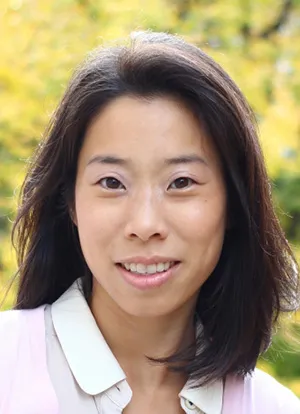Professor Roseann Liu on the Importance of Solidarity in Education Admissions

Visiting Assistant Professor of Educational Studies Roseann Liu.
The Hechinger Report: Asian, black and Latino solidarity should come first
I teach courses at Swarthmore College that challenge students to think critically about their own academic success.
At the beginning of the semester, most students believe their hard work and intellect got them where they are. As the semester goes on, many students come to realize that their academic achievement is as much a product of structural conditions that worked in their favor as it is their hard work and merit. These are lessons that explain why some of the best high schools in America often have low populations of black and Latino students.
When New York City Mayor Bill de Blasio recently proposed a plan to change the admissions criteria for the city’s specialized high schools, it infuriated some Asian-American groups. The new plan sought to increase the number of black and Latino students in these elite schools by no longer relying exclusively on the Specialized High School Admissions Test (SHSAT), an exam that Asian-American students perform disproportionately well on.
Segments of the Asian-American community came out to protest the proposed plan in ways that are reminiscent of how some Asian Americans and opponents of affirmative action, including most recently the U.S. Department of Justice, are mobilizing around the Harvard lawsuit. With signs that read “End Racism,” they decried the new policy as anti-Asian.
...
Like my Swarthmore students who have learned to think critically about their academic success, I encourage Asian-American students to critically examine how historical and structural factors have disproportionately disadvantaged black and Latino students in the educational system. There are three lessons I teach about that are particularly relevant to the situation.
First, I teach how racial bias is built into standardized tests, including entrance exams that determine admission to competitive schools. “Stereotype threat” is a concept that helps explain why some students perform lower on standardized tests — for example, because of negative stereotypes that associate being black or Latino with academic underachievement. One study found that black and Latino students underperformed on the SAT by 40 points because of stereotype threat. Asian-American groups in New York City maintain that administering the SHSAT is the only unbiased way to determine merit. Stereotype threat challenges this assertion.
Instead of providing an unbiased and colorblind assessment of students’ abilities, entrance exams are affected by racial stereotypes. The lower scores of black and Latino students reflect pernicious racial stereotypes associated with these groups.
Second, I teach my students about the enduring effects of segregation. In segregated New York City and throughout the United States, black and Latino students are more likely to attend under-resourced schools. In contrast, like many other Asian-American students in New York City, I attended public schools in Queens — schools that were not innovative, but that were a far cry from the American apartheid public schools, famously documented by Jonathan Kozol, just a train ride away.
These educational inequalities are further exacerbated by how money is unequally distributed in ways that benefit New York City’s high-performing schools, leaving under-resourced schools that serve predominantly black and Latino students with less than their fair share.
Roseann Liu is a Visiting Assistant Professor of Educational Studies. She earned her B.A. at New York University and holds a Ph.D. from the University of Pennsylvania and an Ed.M. from Teachers College, Columbia University. Liu's research interests include the sociocultural foundations of education, deconstruction of popular liberal ideas, and the formation of alliances and solidarity among different racial groups.



